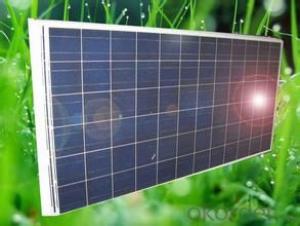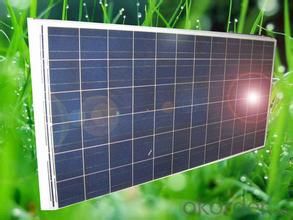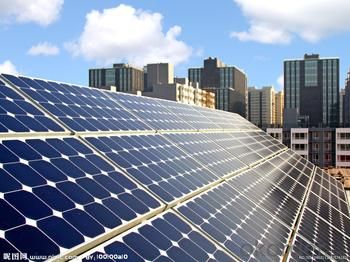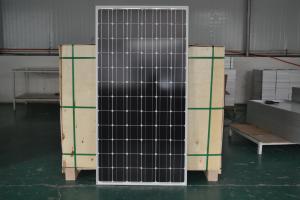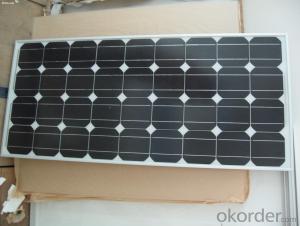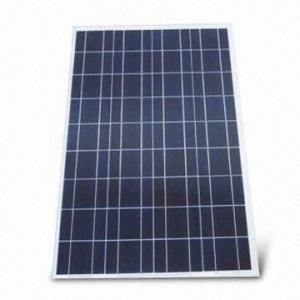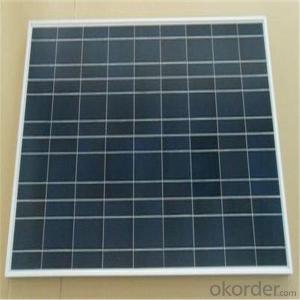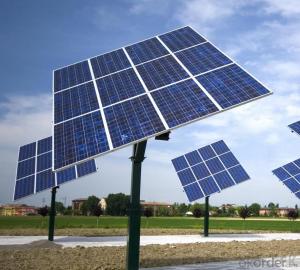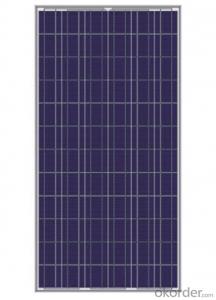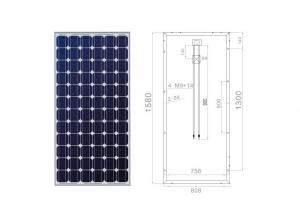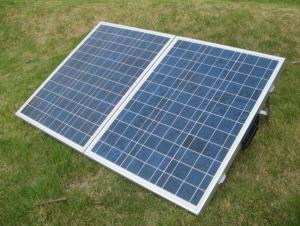Sacramento Solar Panels - Photovoltaic Thin Film Flexible Solar Module 300w
- Loading Port:
- China main port
- Payment Terms:
- TT OR LC
- Min Order Qty:
- 1 pc
- Supply Capability:
- 100000000 pc/month
OKorder Service Pledge
OKorder Financial Service
You Might Also Like
Quick Details
| Place of Origin: | Guangdong China (Mainland) | Brand Name: | HUAYU | Model Number: | HYS-120WM36V |
| Material: | Monocrystalline Silicon | Size: | 1196*669*35mm | Number of Cells: | 72 |
| Max. Power: | 120W | Certification: | ISO/CE/TUV/UL | Application: | Home |
| Warranty: | 20 years limited warranty on power | Solar Cell: | A-grade,high efficiency | Frame: | Aluminium Alloy |
| Glass: | Toughened Glass | EVA: | Highly Adhesive | Backsheet: | TPT/TPE(Block Humidity and Oxy Effectively ) |
| Specification: | Normal |
Packaging & Delivery
| Packaging Detail: | wood case and pallet |
| Delivery Detail: | 10 days |
Specifications
solar module 100wp
High Quality Monocrystalline solar Panel 120W/36V,also provide solar power system
The Best New photovoltaic solar Panels mono , solar system,120W/36V, solar photovoltaic ,solar system,iso certified companies
Principle of solar system
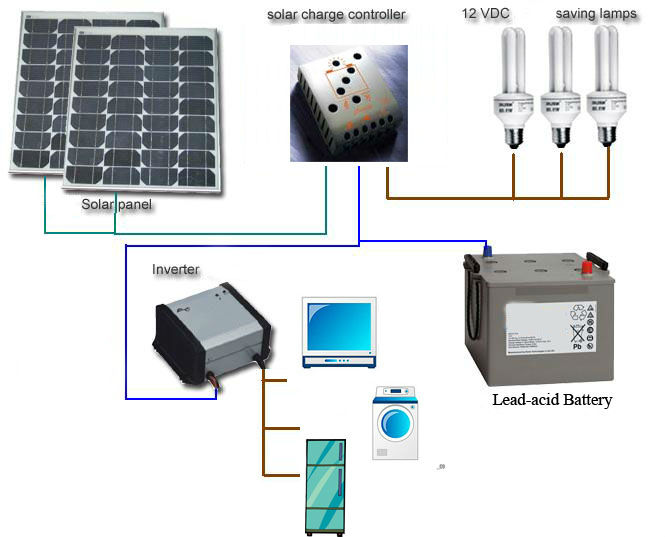
A grade high efficiency solar cells.
15 years limited warranty on material and workmanship
20 years limited warranty onpower
Characteristics
Modules: HYS120WM-36V
Cell: Monocrystalline solar cells (156*61mm)
NO. of cell: 72(4*18)
Maximum power at STC(Pm): 120W
Open circuit voltage(Voc): 42.48V
Optimum operating voltage(Vmp): 35.2V
Short circuit current(Isc): 3.77A
Optimum operating current(Imp): 3.40A
Dimension of module: 1196*669*35mm
Weight: 10kg
Certificate: ISO/CE/TUV/UL
STC:Irradiance 1000W/m2 ,Module temperature 25°C,AM=1.5 Blueprint of the module
Limits
Operating temperature: (-40 to +85°C)
Maximum System voltage: 1000VDC
Temperature and Coefficients
NOCT: (48±2)°C
Current temperature coefficients: (0.06±0.01)%/K
Voltage temperature coefficients: (-155±10)mV/K
Voltage temperature coefficients: (-0.5±0.05)%/K
NOCT:Nominal operation Temperature
Performance Warranty
15 years limited warranty on material and workmanship
20 years limited warranty on power output
Output
Type of terminal: Junction box
Cable: LAPP(4.0mm2)
Asymmetrical lengths: 900mm
The publication summarises warranty and specifications which are subject to change without notice.
- Q: 200 watt solar panel generates how much watts of electricity per month?
- When it exposed to light, it starts generate electricity. Now the 200W written on panel is not its all time power. Its Watt Peak (200Wp) , it means when sun is at peak. it is around PM - 3.30PM daily in India(plane area). And panel never give 200w for more than 5 years, the efficiency reduced up to 0% at completion of 5 years of panel and 20% up to 25 years of life of panel.
- Q: Can solar panels be used to power an entire home?
- Yes, solar panels can be used to power an entire home. By installing a sufficient number of solar panels on the roof or in the backyard, homeowners can generate enough electricity to meet their household's energy needs. Additionally, excess energy produced during the day can be stored in batteries or fed back into the grid for use during nighttime or cloudy days. The size and efficiency of the solar panel system, as well as the energy consumption of the home, will determine its ability to fully power the entire house.
- Q: I have several 6v 4.5a sealed lead acid batteries. I would like to hook one of them up to a solar panel and have it stay charged from the solar panel all the time, but not overcharged. Is there a simple way to do this with an IC or something? I am only a beginner with circuits so I want it to be something very easy to make. Basically, I want it to stay charged all the time so it's available if I need it for a power out or something.Thanks.
- Yes, you can purchase a solar photovoltaic array to keep your batteries charged. You will need a Photovoltaic Cell Panel that produces 27 + watts (6volts x 4.5 amps = 27 watts) at 6 volts of electricity, a Charge Controller that allows only 4.5 amps of power through to the battery and will reduce the amps as the battery nears full charge and shut off the Panel when the battery is fully charged, and a 6v. Battery. Figure you will need a photovoltaic panel capable of producing a minimum of 27 watts if you are going to charge a completely dead 6 v. battery in one day. (with a clear sky). The way the system works is the sunlight strikes the cells on the panel and releases the excess electrons in the cells, they travel along central wires to your battery and charge the battery. When the sun sets, the procedure is reversed and the electrons flow backwards from the battery, into the photovoltaic cells. That is where the Charge Controller is needed. It acts a one way gate and lets the electrons go into the battery, but won't let them go backwards to the Panel. Just set your panel in the sun at the optimum angle for the season and your latitude on earth, connect the charge controller and then the battery, and it will keep your battery charged. Don't waste your money on the small wattage solar photovoltaic systems that claim to keep your battery charged. They simply can't do it unless your battery is in like new condition and is fully charged when they are hooked up. If you battery is a few months old, the small wattage photovoltaic systems can't keep up with the loss of power from sulfation inside the battery.
- Q: hi so im doing a school project thing and they have a lot of different questions for us that help us decide whether we would rather a city have a nuclear reactor, or solar panel. But i cant seem to get the last 2 questions...help please???so question ........What types of emissions, if any, are produced by each type of generating station? Do these emissions affect human health?question 2.....What are the long term financial costs associated with maintaining each type of generating station?thanks!
- There's no standard nuclear reactor, but if we take a GW nuclear plant, it can generate about 8 terawatt-hours/year. A 200 watt solar panel can generate about kilowatt- hour/day, or 365 kwh/year, so that's about 2 million 200 watt solar panels. However, the power output from the nuclear plant is controllable by the operators, where solar panels only operate at full output for a few hours/day (on clear days - less if there's cloud). Therefore, to compare the two, you have to factor in some kind of energy storage or backup which will increase the cost of the solar installation (perhaps by a factor of two or more). Despite claims of solar being cheaper than coal now, when one compares apples to apples (i. e. total energy produced, and controllability) solar is still several times more expensive than coal, and about twice as expensive as nuclear even in the U. S. A gram of U-235 can make usable energy equal to three metric tons of coal. Solar energy production has no hazardous by-products, but manufacture of the panels can involve some very hazardous materials like fluorine (for silicon panels) or cadmium (for CdTe panels). This is part of the reason panel manufacture has gone to Asia - they have fewer environmental regulations and it's easier to dispose of the byproducts of production. DK
- Q: Can solar panels be installed on a canopy or pergola?
- Yes, solar panels can be installed on a canopy or pergola. In fact, these structures can provide an ideal location for solar panel installation as they are often situated in areas with good sun exposure. By placing solar panels on canopies or pergolas, you can maximize the use of available space while also providing shade and protection from the elements.
- Q: I have heard you can make your own solar panels.... But How?Where do you start? Is it cheap, or should I just BUY them already made?
- I'm okorder / for one of the few honest warnings about solar scams.
- Q: Is there a material that is capable of absorbing enough UV radiation to make it worth using as a flexible solar cell?Not flexible as in aluminum, but a material such as plastic (polycarbonate).
- Of Coarse! In fact flexible solar panels have already been invented. Ever hear of a solar panel shirt? Instead of the standard crystalline silicon cell these new solar panels use a flexible polymorphous silicon cell to pull in power from the sun's rays. They can be placed on clothing, cell phones, and virtually anything else.
- Q: Can solar panels be used for charging electric scooters?
- Yes, solar panels can be used for charging electric scooters. By connecting the electric scooter to a solar panel system, the sunlight energy is converted into electricity, which charges the scooter's battery. This eco-friendly and sustainable method of charging can reduce reliance on grid electricity and promote renewable energy usage.
- Q: Can I use a regulator from a car to regulate the voltage from a solar panel to a battery?
- solar panels will naturally produce a certain DC voltage which is what your battery needs - the current will vary based on the sun light. You need probably 4V to have some over voltage. So based on your specs look at having at least 4 V but not too much over that (tells you how many panels you need in series) I would have blocking diodes (probably the solar cell has them built in) to insure the battery does not discharge thru the panel.
- Q: What are the different types of solar panels?
- There are primarily three types of solar panels: monocrystalline, polycrystalline, and thin-film solar panels. Monocrystalline panels are made of a single crystal structure, making them highly efficient but also more expensive. Polycrystalline panels are made up of multiple crystals and are slightly less efficient but more affordable. Thin-film panels are the least efficient but are flexible and can be used in a variety of applications.
Send your message to us
Sacramento Solar Panels - Photovoltaic Thin Film Flexible Solar Module 300w
- Loading Port:
- China main port
- Payment Terms:
- TT OR LC
- Min Order Qty:
- 1 pc
- Supply Capability:
- 100000000 pc/month
OKorder Service Pledge
OKorder Financial Service
Similar products
Hot products
Hot Searches
Related keywords
